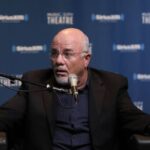Canadians and Americans have shared battlefields from Vimy Ridge to Kandahar. But they’re now bracing for an economic war against each other.
Canadian economist Mike Moffatt is sounding the alarm about this 150-year old alliance unraveling as Trump’s tariffs reshape public opinion north of the border.
Don’t miss
- I’m 49 years old and have nothing saved for retirement — what should I do? Don’t panic. Here are 5 of the easiest ways you can catch up (and fast)
- Gain potential quarterly income through this $1B private real estate fund — even if you’re not a millionaire. Here’s how to get started with as little as $10
- Car insurance premiums could spike 8% by the end of 2025 — thanks to tariffs on car imports and auto parts from Canada and Mexico. But here’s how 2 minutes can save you hundreds of dollars right now
“I think it’s a combination of we’re hurt and angry,” said former advisor to ex-Prime Minister Justin Trudeau on a recent episode of The Prof G podcast.
He warned that the trade war could cripple the Canadian economy while also imposing hard costs on ordinary Americans by diminishing U.S. soft power.
Economic costs on both sides
Like any failing relationship, a trade war inflicts damage on both sides, leaving neither unscathed.
On the Canadian side, the Bank of Canada estimates that the trade war could lower GDP growth by as much as 3% in the first year.
“It would basically look like the 2008-09 financial crisis up here,” said Moffatt. “But unlike ‘08-’09, it would actually be inflationary in nature. It’s actually a little bit more like the pandemic where we get the GDP drop of the financial crisis without the deflation of the financial crisis.”
The chaos has also shifted the way Canadians see their southern neighbors. According to a recent Leger poll, 27% of Canadians said they consider the U.S. an “enemy”, a stark rise from just 4% in 2020, according to YouGov.
Americans, too, are bracing for economic fallout. The Federal Reserve Bank of Atlanta recently lowered its first-quarter 2025 GDP growth estimate from approximately 3% to -2.4%. Meanwhile, a study by the Peterson Institute for International Economics estimates that the average U.S. household could face an additional $1,200 in costs due to the trade war. Notably, this estimate accounts for the offsetting impact of Trump’s anticipated tax cuts but doesn’t factor in the effects of reciprocal tariffs from other nations.
One example of these retaliatory measures is a proposed 25% surcharge on electricity exports to New York, Michigan and Minnesota by the Canadian province of Ontario — potentially leading to higher energy bills for American families. The Ontario government announced it made $260,000 off of the one day that surcharge was enacted on March 10.
The Trump administration had delayed several tariffs on Mexico and Canada until April 2. However, the administration brought in a 25% tariff on Canadian automobiles on March 27. Canada responded with reciprocal tariffs, including a 25 per cent tariff on non-CUSMA compliant U.S.-made vehicles, and on the non-Canadian and non-Mexican content of CUSMA compliant U.S.-made vehicles on April 9.
Read more: Thanks to Jeff Bezos, you can now become a landlord for as little as $100 — and no, you don’t have to deal with tenants or fix freezers. Here’s how
Protect your finances
With uncertainty surrounding the length and severity of this trade war, families should take proactive measures to fortify their financial positions. Adjust your monthly budget to account for potential price increases and consider cutting back on non-essential spending. Reducing debt can also help your financial resilience.
Keep a close eye on your industry, as trade barriers may reshape the labor market. Several automakers, food distributors, freight companies and liquor producers have already begun layoffs.
Building an emergency fund with three to six months’ worth of expenses can provide a crucial safety net, particularly for those working in export-dependent industries.
These financial moves will not only help navigate the immediate economic turbulence but also position you and your family for long-term stability — regardless of geopolitical shifts.
What to read next
- Want an extra $1,300,000 when you retire? Dave Ramsey says this 7-step plan ‘works every single time’ to kill debt, get rich in America — and that ‘anyone’ can do it
- Here are 5 ‘must have’ items that Americans (almost) always overpay for — and very quickly regret. How many are hurting you?
- Do you rely on your monthly Social Security check to get by? Here are 5 simple money moves for American seniors during Trump’s presidency
This article provides information only and should not be construed as advice. It is provided without warranty of any kind.








